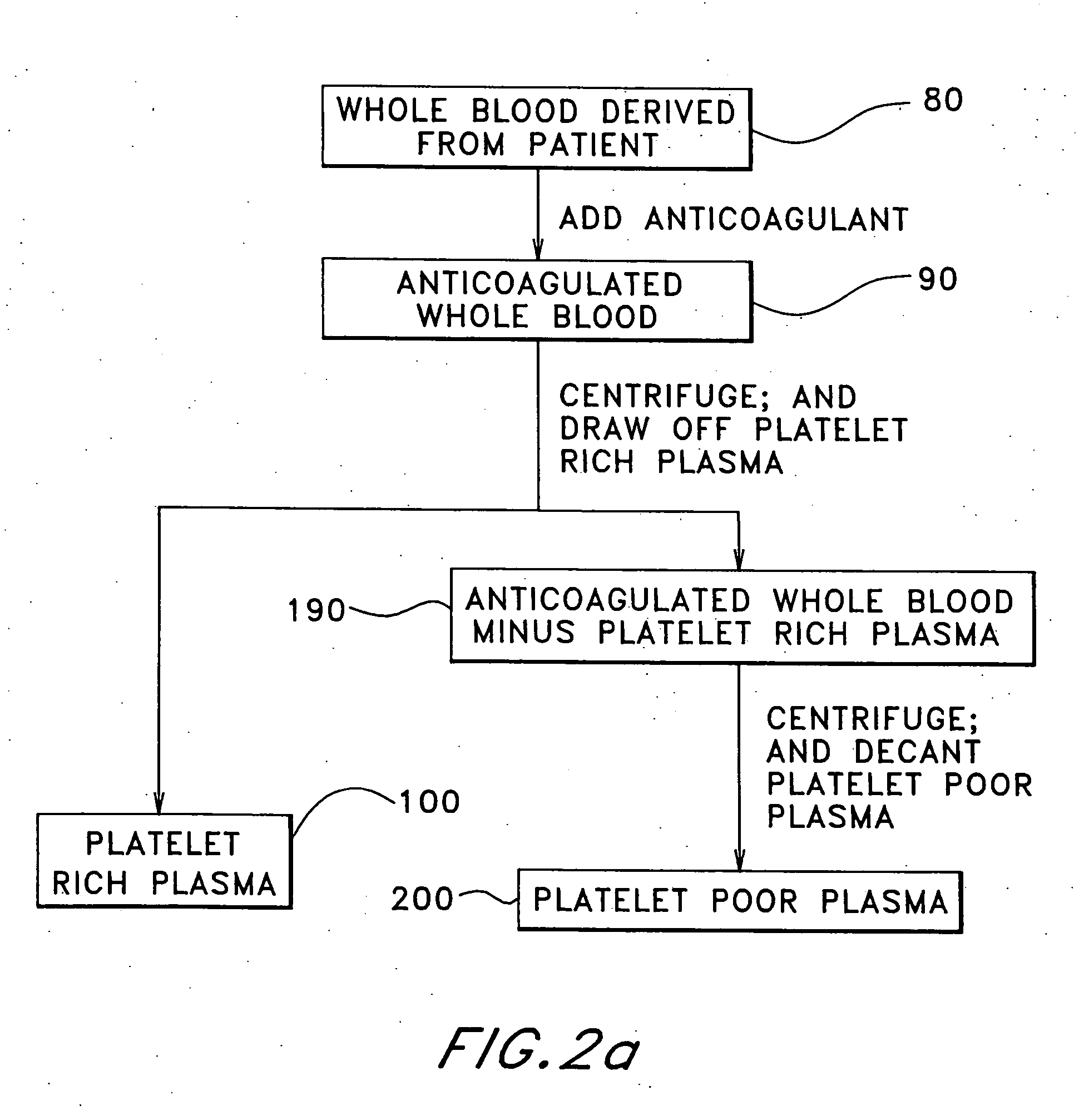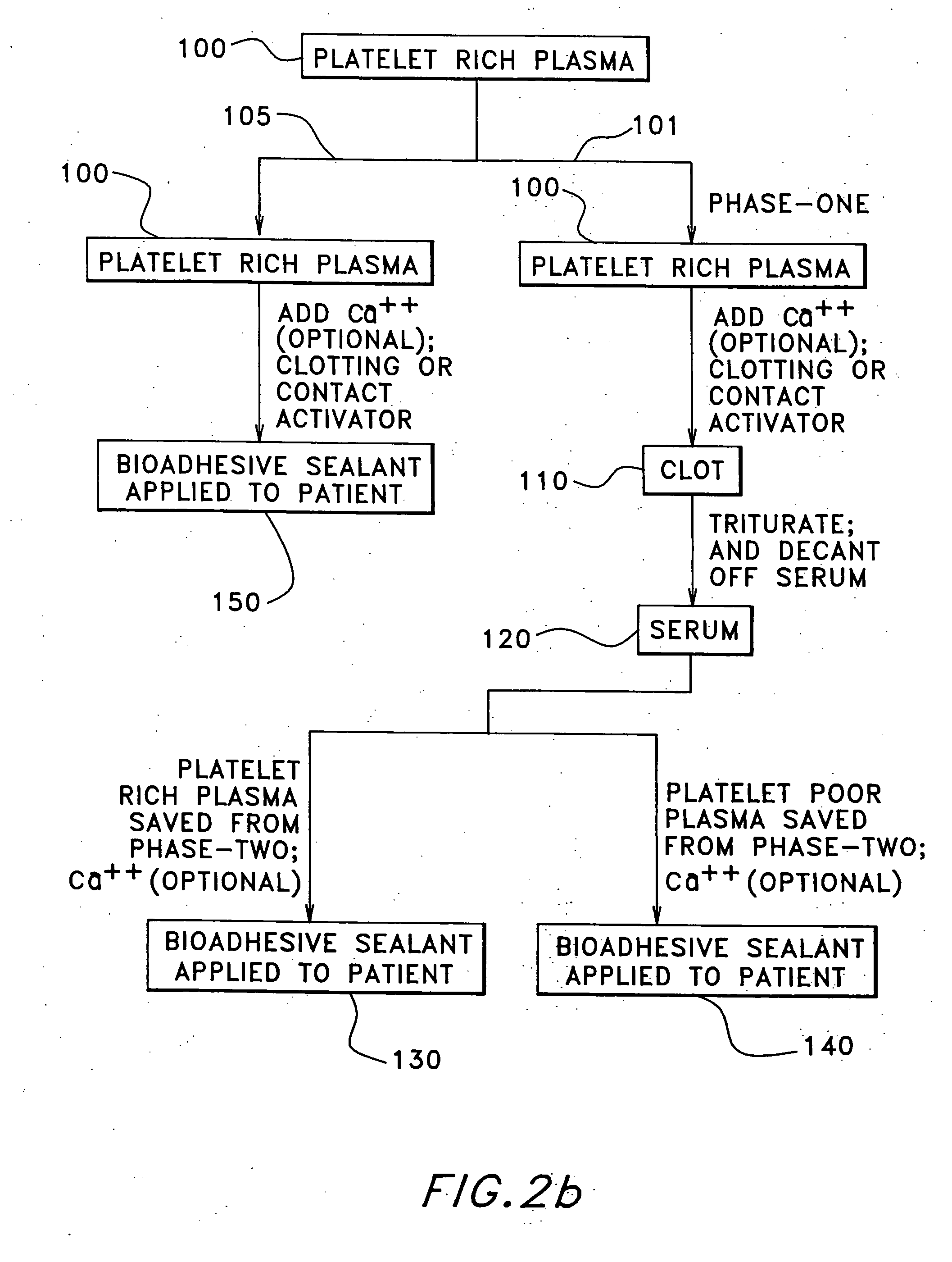Autologous fibrin sealant and method for making the same
a bioadhesive and fibrin technology, applied in the field of autologous bioadhesive sealant compositions, can solve the problems of fibrin glue nor its essential components fibrinogen and thrombin being widely used in the united states, and it is unlikely that there will be a change in this policy in the foreseeable future, and achieve the effect of eliminating the risks associated with the use of bovine and recombinant human thrombin
- Summary
- Abstract
- Description
- Claims
- Application Information
AI Technical Summary
Benefits of technology
Problems solved by technology
Method used
Image
Examples
example 1
Preparation of Bioadhesive Sealant Composition Using Platelet Rich Plasma and Serum
[0057] 10 cc's of platelet rich plasma is added to a sterile glass tube containing 0.33 cc's of 10% calcium chloride. A stopper is placed in the tube and the contents are gently mixed and the tube is set aside. Gelling of the contents will occur in two to eight minutes. The gel is passed to a dry sterile cup where it is squeezed out 4-6 cc's of the serum, produced therefrom, and 1 cc of air is drawn into a syringe containing 4 cc of platelet rich plasma along with 1 cc of the serum. The bioadhesive sealant composition will gel inside the syringe within approximately two minutes. The gel time may be decreased by increasing the amount of serum added to the platelet rich plasma.
example 2
[0058] 10 cc's of whole blood is withdrawn from a patient, placed into a sterile glass tube, and allowed to clot naturally. The clot may be subsequently squeezed or centrifuged to release approximately 4-6 cc's of serum.
[0059] An equivalent volume of 10% calcium chloride is then mixed with the serum. 1 cc of this calcified serum is then mixed with 7-8 cc's of platelet rich plasma and 2 cc's of air. The resulting bioadhesive sealant will gel in approximately 1-2 minutes.
example 3
[0060] To a sterile glass syringe containing 0.33 cc's of 10% calcium chloride is added 10 cc's of platelet rich plasma The mixture is allowed to rest for 2 to 8 minutes. Once the gel appears to be appropriately viscous, it may be applied to the wound site.
[0061] The techniques demonstrated in Examples 1 and 2 may be simultaneously prepared for (a) an additional source of serum; and (b) to confirm successful coagulation.
PUM
 Login to View More
Login to View More Abstract
Description
Claims
Application Information
 Login to View More
Login to View More - R&D
- Intellectual Property
- Life Sciences
- Materials
- Tech Scout
- Unparalleled Data Quality
- Higher Quality Content
- 60% Fewer Hallucinations
Browse by: Latest US Patents, China's latest patents, Technical Efficacy Thesaurus, Application Domain, Technology Topic, Popular Technical Reports.
© 2025 PatSnap. All rights reserved.Legal|Privacy policy|Modern Slavery Act Transparency Statement|Sitemap|About US| Contact US: help@patsnap.com



